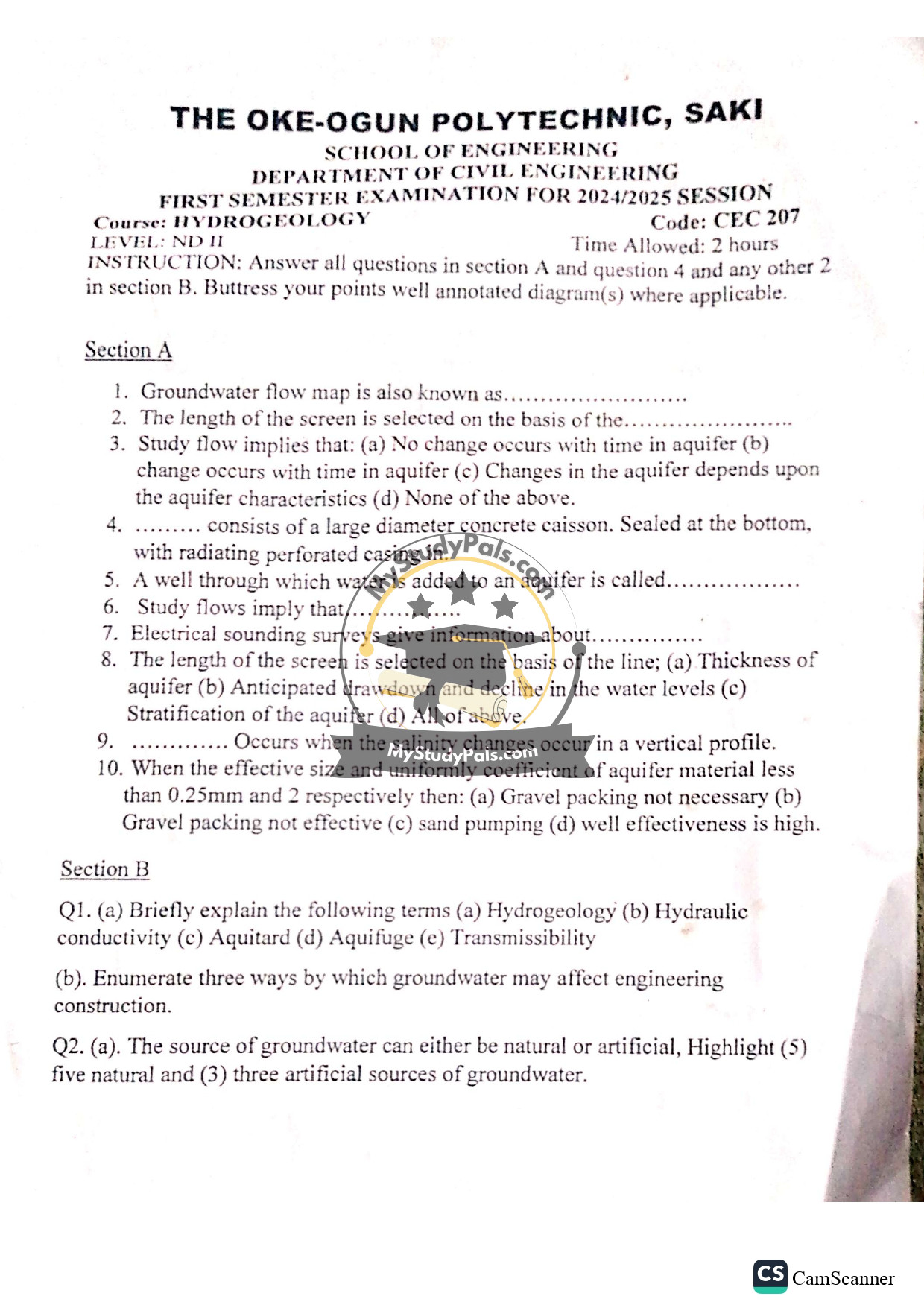ANWSER
Section A Answers:
Question 1:
Groundwater flow map is also known as potentiometric map.
Question 2:
The length of the screen is selected on the basis of the thickness of the aquifer.
Question 3:
Steady flow implies that: (a) No change occurs with time in aquifer.
Question 4:
Ranney well (collector well) consists of a large diameter concrete caisson.
Question 5:
A well through which water is added to an aquifer is called a recharge well.
Question 6:
Steady flows imply that no changes occur in the aquifer’s properties over time.
Question 7:
Electrical sounding surveys give information about subsurface layer resistivity, salinity, and aquifer boundaries.
Question 8:
The length of the screen is selected on the basis of the line: (d) All of the above.
Question 9:
Salinity stratification occurs when salinity changes occur in a vertical profile.
Question 10:
When the effective size and uniformity coefficient of aquifer material are less than 0.25mm and 2 respectively: (a) Gravel packing not necessary.
—
Section B Answers:
Q1. (a)
– Hydrogeology: Study of groundwater distribution, movement, and interaction with geological formations.
– Hydraulic conductivity: Measure of a material’s ability to transmit water through pores.
– Aquitard: A semi-permeable layer (e.g., clay) that restricts groundwater flow but can store water.
– Aquifuge: An impermeable layer (e.g., solid granite) that neither stores nor transmits water.
– Transmissibility: The rate at which water flows through an aquifer’s entire thickness under a unit hydraulic gradient.
(b) Three ways groundwater affects engineering construction:
1. Uplift pressure on foundations, causing instability.
2. Soil liquefaction or reduced shear strength in saturated soils.
3. Corrosion of underground structures due to chemical composition.
—
Q2. (a)
Natural sources of groundwater:
1. Infiltration from precipitation (rain/snow).
2. Seepage from rivers, lakes, and wetlands.
3. Springs discharging groundwater.
4. Glacial meltwater infiltration.
5. Natural recharge through permeable geological formations.
Artificial sources of groundwater:
1. Recharge wells (injection of water into aquifers).
2. Irrigation return flow (excess water percolating back to aquifers).
3. Artificial basins or ponds designed for groundwater replenishment.


